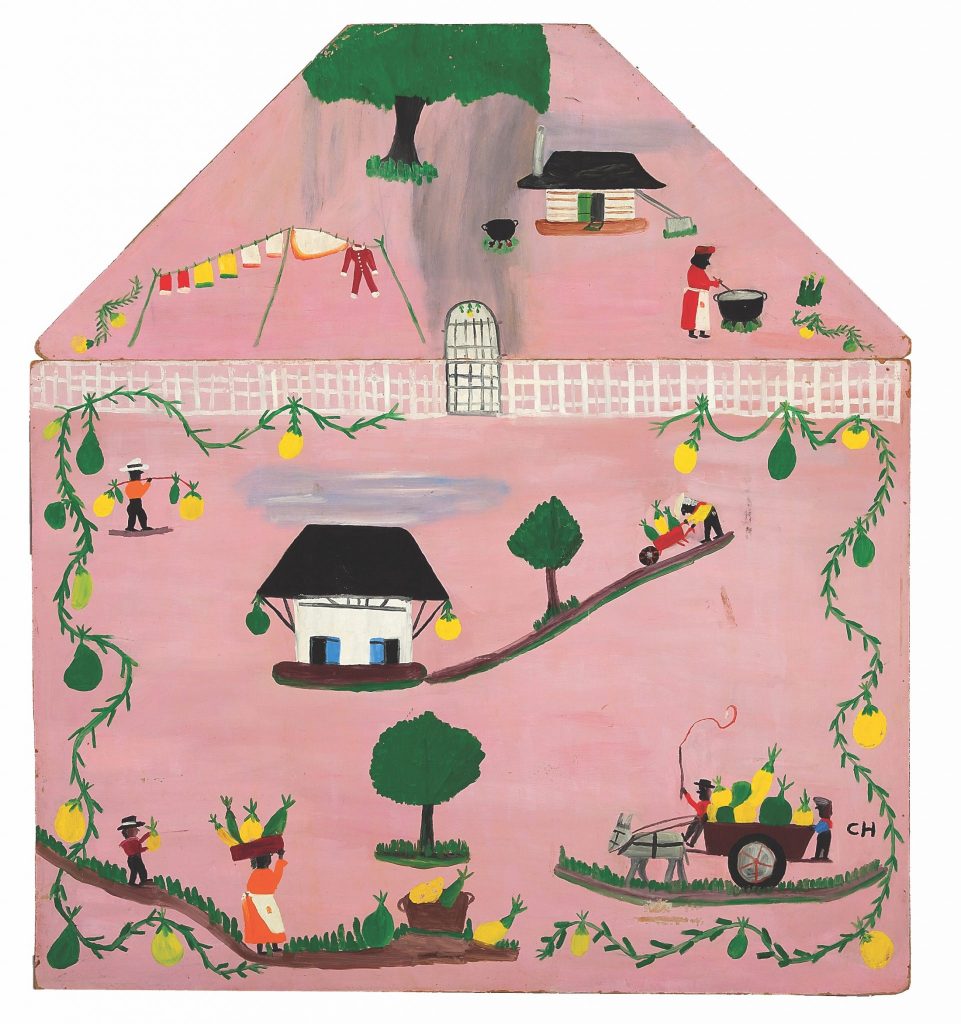
Clementine Hunter, Harvesting Gourds near the African House and Wash Day Near Ghana House, Melrose Plantation, 1959, Oil on board, 73 x 66 ½ inches, New Orleans, Museum of Art, Museum Purchase, C. Heiderich Art Purchase Fund, 2018.8
In the spring of 2018, NOMA acquired a monumental mural painting by Clementine Hunter (1887–1988), one of Louisiana’s most beloved and accomplished artists. An extremely rare example of one of the large-scale, site-specific murals Hunter created for the interiors of Melrose Plantation in the Cane River region near Natchitoches, where she spent much of her life working as a field hand before pursuing her talent as a painter after age 50, this acquisition will allow NOMA’s permanent collection to represent the full range and scope of Hunter’s artistic legacy. Hunter designed such installations for spaces across the plantation, from her own living quarters and the shop where she sold her art, to the many public and private rooms throughout the property that were almost exclusively decorated with installations of her art.
This painting reflects Hunter’s deep engagement with the landscape, history, and social politics of the American South, as well as her inventive approach to narrative, sequence, and composition. In the painting, Hunter represents life at Melrose through a series of narrative vignettes that unfold across a series of brown and green slashes of paint carefully paced throughout the composition. These slashes of earth capture the rhythm and flow of the plantation, and also hint at the broader structural and spatial limitations that defined plantation life. Designed specifically in response to the plantation’s architectural context, the work also reflects its confines, featuring a large white fence that stretches across the entire expanse of the composition, as well as a decorative border of gourds and vines that both frames and delimits the compositional space. Throughout the painting, subtle rhythms and compositional echoes, such as the exact rhyming of the horse whip and the vine at the painting’s lower right, speak to Hunter’s nuanced approach to form and composition.
NOMA gave the artist her first museum show in 1955, which was among the first solo shows for any African American female artist in the country. Paintings such as Harvesting Gourds near the African House and Wash Day Near Ghana House, Melrose Plantation reflect Hunter’s vanguard thinking and early adoption of many of the artistic strategies employed by contemporary artists. Her work sits as easily among the work of artists like Robert Rauschenberg as art being made today by artists such as Mickalene Thomas. Reflecting Hunter’s innovative and multifaceted artistic practice, this painting will allow NOMA to make important new connections between her work and current conversations in modern and contemporary art.
The painting is on view in the second-floor center hall of the museum.
—Katie A. Pfohl, Curator of Modern and Contemporary Art